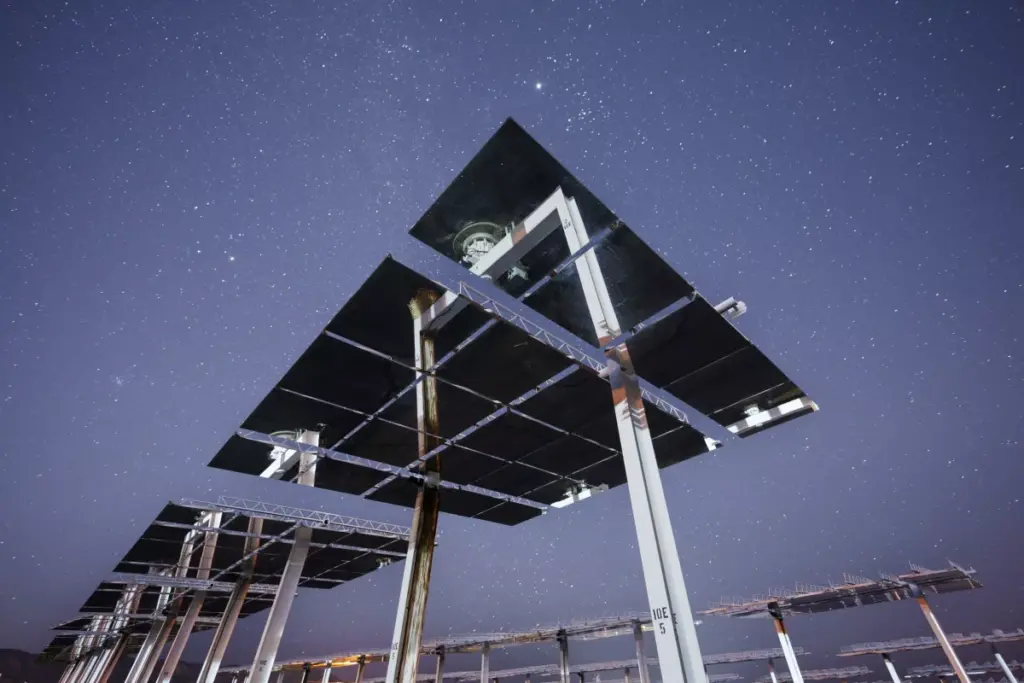
A pioneering initiative at the National Solar Thermal Test Facility in Albuquerque, New Mexico, aims to repurpose solar power technology for nighttime asteroid detection. Led by scientist John Sandusky from Sandia National Laboratories, the project seeks to maximize the utility of solar plants, which traditionally generate no power after sunset.
The facility features a 200-foot-high (61 m) concrete tower surrounded by 218 mirrors that track the sun and focus its rays. While the system can generate a substantial 6 MWt of power during daylight hours, its capabilities come to a halt when night falls. Sandusky’s innovative approach involves programming the heliostat mirrors to track celestial objects instead of just the sun, allowing them to function as a form of optical telescope.
Through a Laboratory Directed Research and Development project, Sandusky tested one of the heliostats to observe the night sky, directing reflected energy onto optical instruments positioned on the tower. This process yielded a minimal power output of only a femtowatt, but oscillating the heliostat over a one-minute cycle created conditions conducive for detecting asteroids.
Traditionally, astronomers utilize optical telescopes that capture long-exposure images of the night sky, with asteroids appearing as streaks against the backdrop of stars. Sandusky’s method, however, does not produce visible images. Instead, it records the photocurrent power spectrum of incoming light at sub-milliHertz resolution. If an asteroid or spacecraft moves through the field of view, it registers as a frequency shift relative to the surrounding starlight, indicating a change in its motion.
This technique holds promise for enhancing existing detection systems. Sandusky suggests it could serve as a low-cost supplement to NASA’s Asteroid Terrestrial-impact Last Alert System (ATLAS), which aims to identify potentially hazardous asteroids. Furthermore, there are potential military applications, as the technique could aid defense agencies in detecting covert spacecraft operating within cislunar space.
Looking ahead, Sandusky emphasizes the need to scale the technology from a single heliostat to multiple units to improve asteroid detection capabilities. “We’re looking for opportunities to scale up from one heliostat to many,” he stated. “We also want to demonstrate we can scale up the technology to detect even smaller asteroids.”
Sandusky presented this research at a recent conference of the International Society for Optics and Photonics, highlighting the innovative intersection of solar energy and space exploration. This groundbreaking work not only showcases a novel application for solar infrastructure but also underscores the importance of developing new tools for asteroid detection as humanity seeks to understand and potentially mitigate threats from space.






